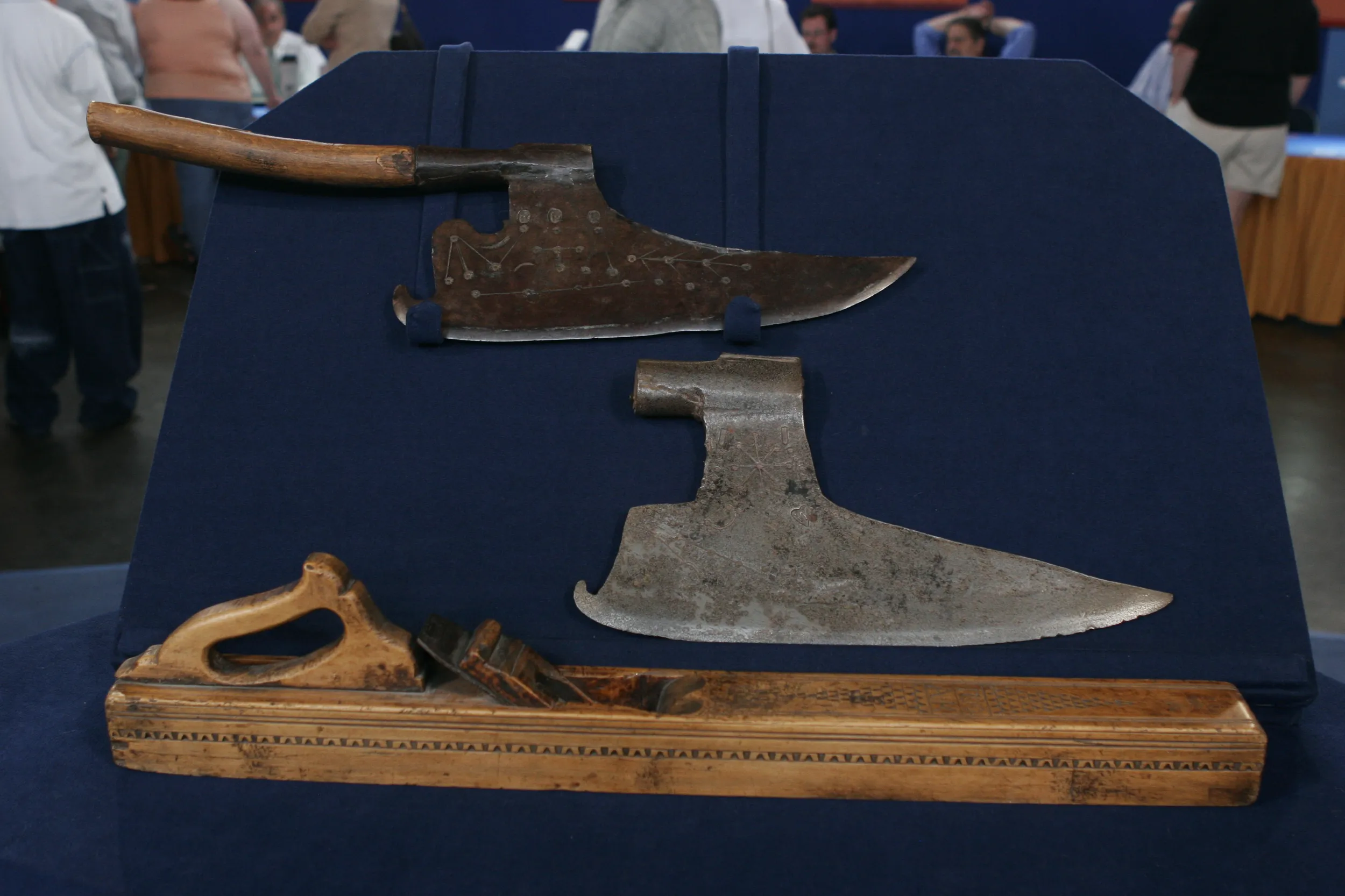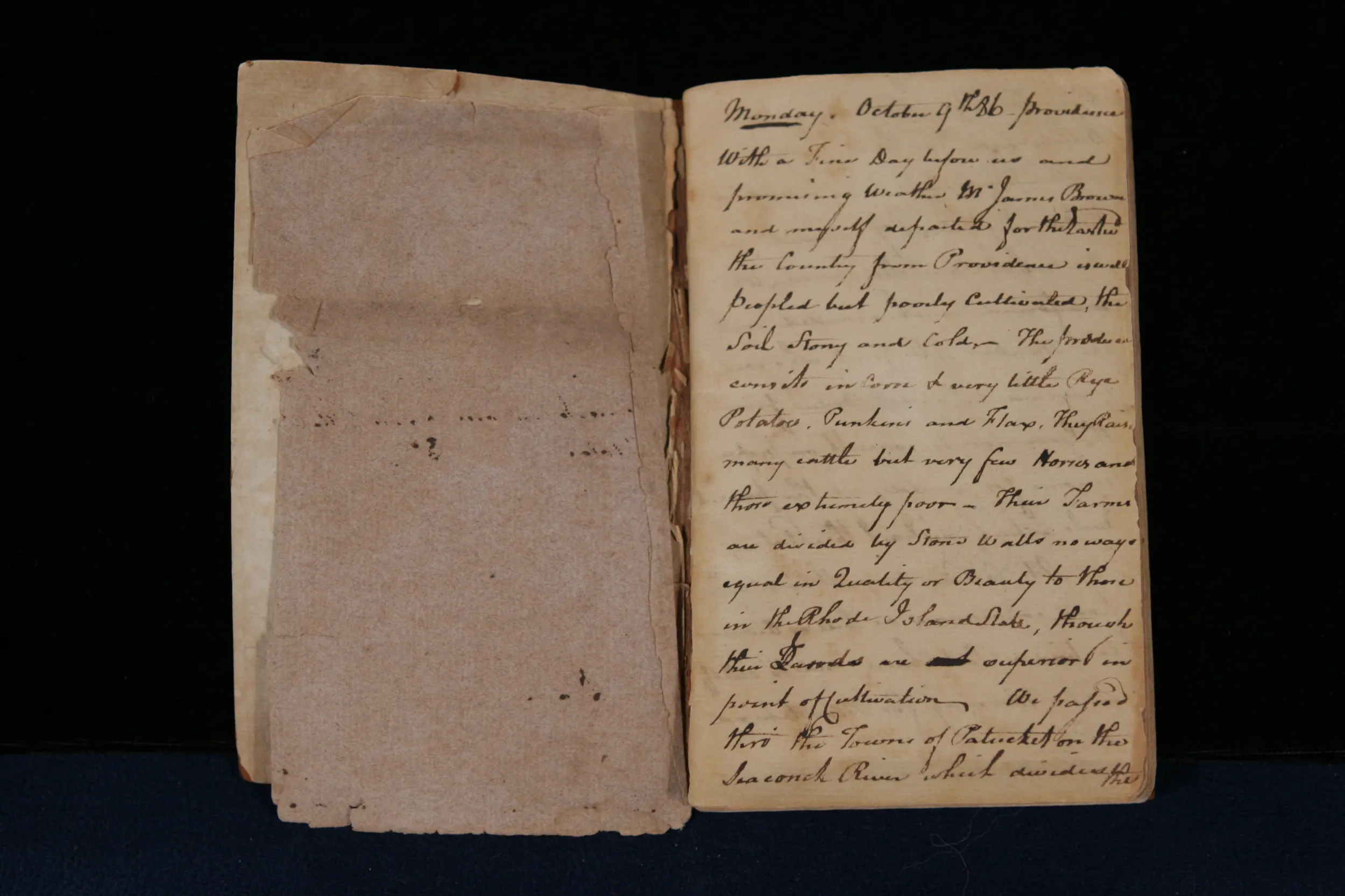GUEST: Well, we lived in Providence, Rhode Island, for a while and would go out on weekends to yard sales and auctions. This piece was purchased at a yard sale in Hingham, Massachusetts--
APPRAISER: I see.
GUEST: --about 1971.
APPRAISER: What did you pay for it at the time?
GUEST: Eighteen hundred dollars.
APPRAISER: $1,800, okay.
GUEST: I actually thought it was a reproduction when I bought it.
APPRAISER: Really.
GUEST: I'd seen them in the museums before, but I didn't think this was an original piece.
APPRAISER: I see. And what sort of condition was it in when you bought it? Did it look like this or...
GUEST: No, it was loose. All of the joints were kind of loose and the drawers... This was the finish, except I had it polished and buffed.
APPRAISER: Well, it's a very impressive-looking block-front chest. It's interesting that it turned up in Hingham, Massachusetts. I think it was probably made not far from there. And this sort of block-front with those curved-bracket feet was a very popular style in Massachusetts from the 1760 to 1780 period, so it is an 18th-century form. There are some things about the chest that are not the way they would have been in the 18th century, and it's a piece that has gone through considerable changes over those years; but I do think that at its heart it is an 18th-century chest. When you look at it from the front, if you compare the color of the top and the feet to that of the drawer facades, you notice that the top and feet are considerably darker. And one would expect the sunlight and the aging process to be pretty even. We looked at this carefully earlier this morning and, indeed, the feet are modern replacements and you can tell that from the sharpness of the edges. And also they're just a little bit oversized for the nice proportions of this piece. It's a nice, fairly narrow case, which collectors very much appreciate. And the top has actually been moved up and a strip applied to the back and the front edge of the top was reshaped.
GUEST: How do you know this was moved forward?
APPRAISER: Well, it would have been a single board in all likelihood. This strip on the back has machine planer marks and this strip is definitely a new one. So my hunch is that they took the old top and moved it forward, re-cut the front of it and added this strip on the back in order to save the wood.
GUEST: I'll be darned.
APPRAISER: And I think the brasses are replaced brasses, but I think they're period brasses that have been resurfaced. So, it's had considerable changes over the years and from a market perspective, there's quite a penalty for new feet and an adjusted top. So that affects the value of it considerably. But the good news is that this piece was saved from possibly going off to the dump or being lost to us forever. I think with the replaced feet, its value would be largely decorative today, so it would be worth maybe $3,000 to $5,000, I would think, at auction, as a period piece with some alterations.









